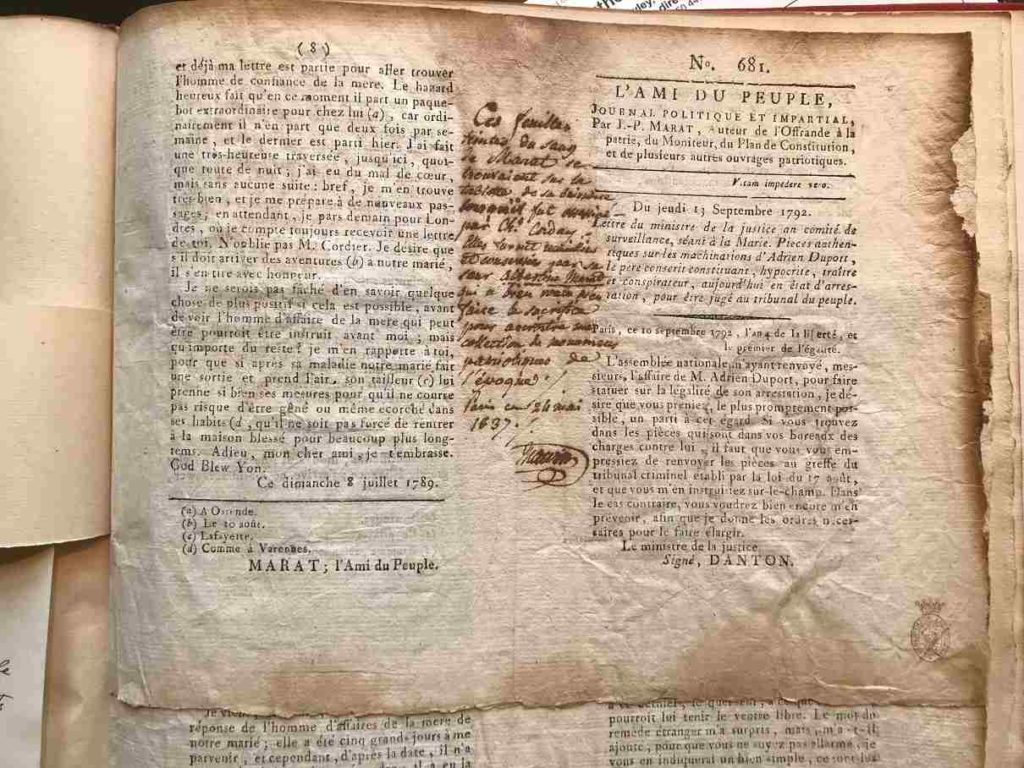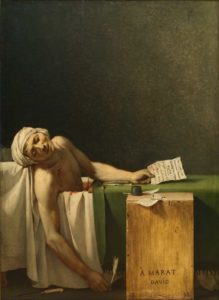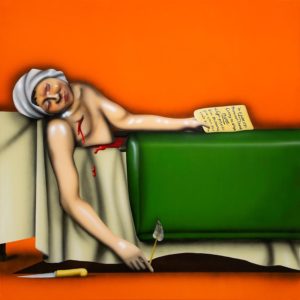
Maddie DeFilippis is a soon-to-be-graduated student at the University. She has worked at the Museum since her first year, and is so excited to have been part of the transformation of it into the Wardlaw Museum. In her spare time, she loves to attend any type of event related to art or history! She has studied the French Revolution in French and History courses, and is excited to have written this wee post about one of the University’s most infamous honorary graduates, Jean-Paul Marat!
As the editor of the radical newspaper L’Ami du Peuple, Marat expressed some of his most controversial views. L’Ami du Peuple translates to ‘Friend of the People’, a popular sentiment during the French Revolution and a direct reference to the tripartite cry of ‘liberté, égalité, fraternité’. Marat was a radical proponent of democracy, and his newspaper contributed to the ideological stirrings of the French Revolution.

Starting in 1789 (the widely accepted start-date of the French Revolution), Marat became the published advocate for many disenchanted French people as he decried the aristocracy and the monarchy. Freedom of the press was not a guarantee at the time, and so Marat’s physical safety was threatened. Although he was sentenced to prison and had to flee the country multiple times into exile, Marat was so popular that his fame provided him with relative security during some of the most turbulent times of the early Revolution. Indeed, many Parisians subscribed to his newspaper because of its dedication to the ‘société des patriotes’. Marat was a politician as well as a writer, and became a delegate of the National Convention in 1792, on a platform of the reformation of the government. As a prominent politician and a controversial published author, Marat made enemies, and one of them took matters into her own hands.

Charlotte Corday was a supporter of a moderate republican group, which desired an end to the monarchy but disapproved of the Revolution’s fiery attitude and its deadly consequences. On the 13 July 1793, Corday gained access to Marat’s rooms, and stabbed him to death. She assassinated Marat because she blamed him for taking the Revolution in a more extreme direction that had led to the execution of thousands of people. Her actions, however, caused even more support to swell for Marat and what he stood for. In addition to the painting by Jacques-Louis David, which visually martyred Marat in a style similar to Michelangelo’s Pietà, parades were held in Paris celebrating the martyrs of the Revolution. Some have even called David’s work ‘The Pietà of the Revolution’, a testament to Marat’s effect on morale during the darkest days of the Revolution.

A copy of the newspaper L’Ami du Peuple was on the table beside his bath at the time of his death, alongside a letter form Charlotte Corday, which featured in the masterpiece ‘Marat assassiné’. Although Marat was the editor of multiple newspapers during his lifetime, L’Ami du Peuple is the most famous, as it is the one Marat was known to be editing as he was murdered.

This original copy of L’ Ami du Peuple, visibly stained with Marat’s blood and bathwater, will be displayed in ‘The Death of Marat and the Birth of the Lobster’ exhibition by artist Philip Colbert at the Wardlaw Museum in St Andrews.